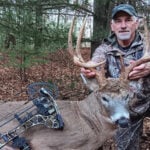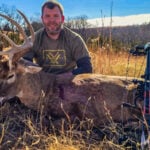by Brian Grossman
Today’s bowhunters take their outdoor pursuits very seriously. It’s no longer enough just to spend a few weekends a year in the deer stand to fill a tag or two. The modern bowhunter spends countless hours over the course of a year scouting, running trail cameras and doing whatever they can to increase their odds of being successful in the fall. Part of this bowhunting evolution has been the rise in popularity of planting food plots.
Food plots have become an integral part of the deer hunting and land management lifestyle. Just flip through your favorite hunting magazine or spend a few minutes watching your favorite hunting show and you’re sure to see ads for the latest, greatest food plot seed or that can’t-do-without food plot implement. And it’s easy to see why planting food plots has become big business; there is something very rewarding — almost therapeutic — about working the land with your own hands to improve a property for the wildlife that call it home. It’s even more rewarding when you’re able to put a tag on a big, mature whitetail because of those efforts.

Is corn a viable option for summer food plots?
Benefits of a Summer Food Plot
Aside from the benefits that food plots bring to the hunter, they also have their advantages to the deer that use them. Food plots can provide important nutritional benefits during critical periods in a whitetail’s life. For years, much of the food plot focus has been on cool-season plantings of popular grains such as wheat, rye, and oats, along with a variety of perennial clovers, and brassicas such as rape and turnips. These plantings provide great late-season hunting opportunities as well as important winter nutrition during the stressful post-rut period.
Often overlooked, however, are warm-season plantings. Summer can be a stressful time for white-tailed deer, especially in the South and West where summers can be particularly hot and dry. Good, natural forage is often lacking at this time, so supplemental plantings can be extremely beneficial. These plantings can draw in deer during the early archery season to improve hunting opportunities and also serve to provide nutrition during another critical time in the whitetail’s life — when does are lactating and bucks are developing antlers. They can also provide excellent forage for weaning fawns. Ensuring your does and their fawns are healthy going into the fall and winter will lead to bigger, healthier deer (bucks) in the seasons that follow.
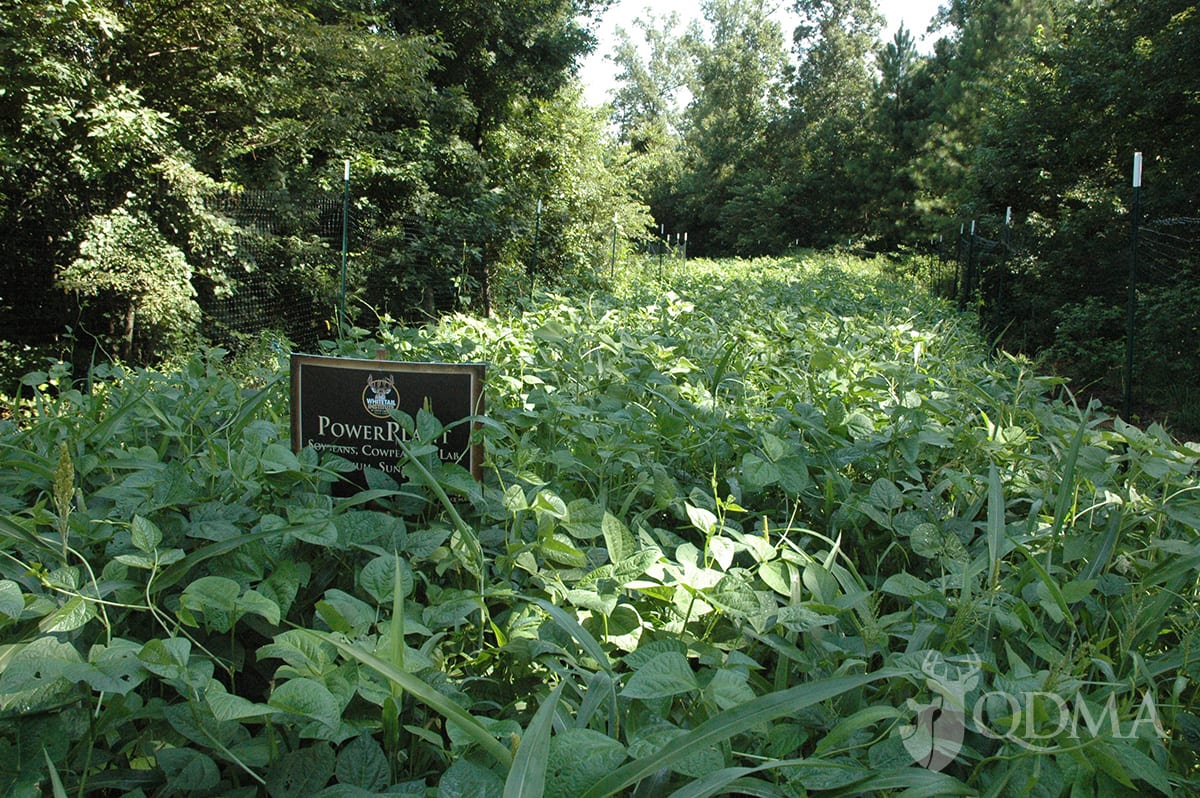
A secluded summer food plot is the perfect option for keeping your herd fed at a crucial time of year.
Choosing What to Plant
Warm season mixes are typically planted in the spring and grow throughout the summer months. Most species used in warm-season mixes are annuals, meaning they will germinate, grow, flower, produce seed and die in a single growing season, with most succumbing to the first good frost.
There are a variety of options for warm-season food plot mixes, depending on your location, soil quality as well as the goals for your summer plot. Many of these options are legumes, such as alfalfa, alsike clover, alyceclover, American jointvetch, red clover, lablab, soybeans, cowpeas, and Sunn hemp. Other options include grain sorghum, corn and sunflowers.
With hundreds of seed options available these days, it would be impossible to cover even a fraction of them in a single article, so we’ve laid out a few of the most popular species and mixes.
Soybeans
When it comes to a single warm-season food plot species, it’s hard to beat soybeans. They provide over 20 percent crude protein (whitetails need approximately 16 percent for optimal growth) throughout the spring and summer and if they aren’t harvested, the bean pods will continue to provide excellent forage throughout the winter months. What really sets soybeans apart from many other choices is the availability of Roundup-Ready varieties that can be oversprayed with glyphosate herbicide (Roundup or one of the many generics available) to control both grass and broadleaf weeds in the food plot without damaging the soybeans. This is a huge advantage over other options, as weed competition can be one of the biggest challenges to a successful warm-season food plot
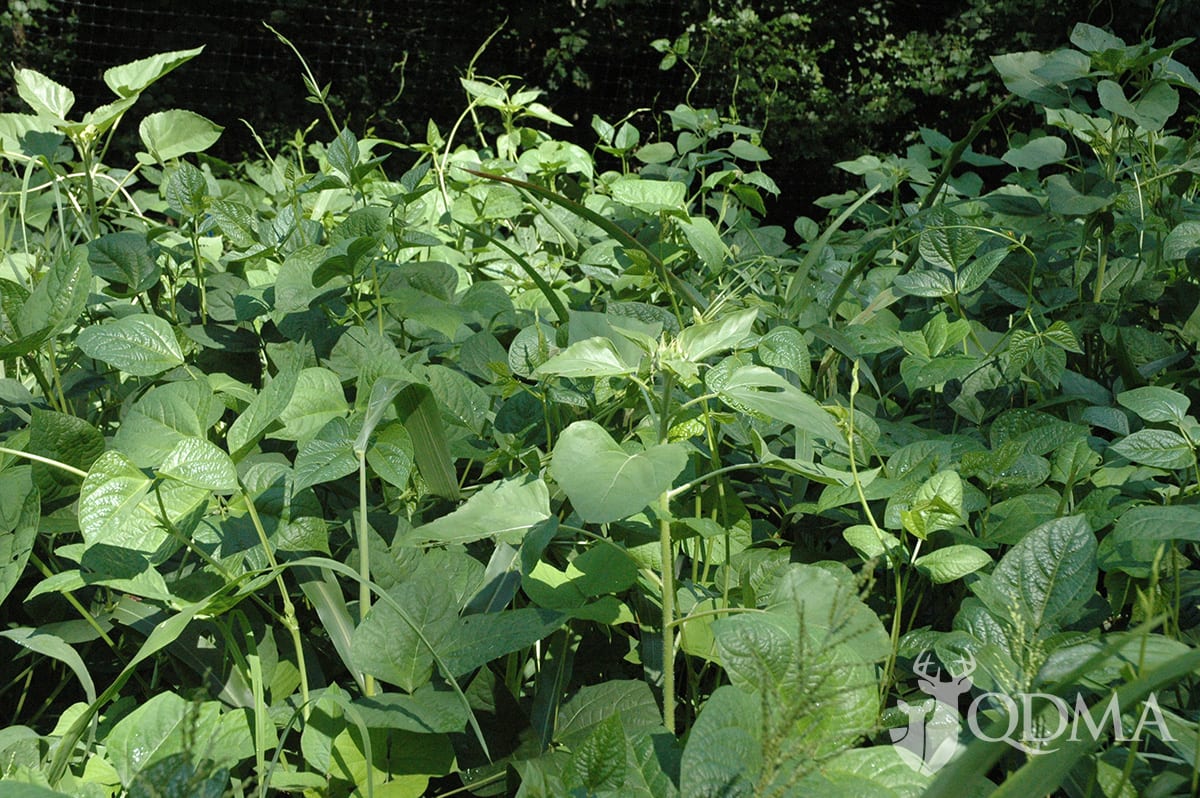
Summer food plots are often the most overlooked aspect of habitat management for the deer herd on your property.
Cowpeas
Another popular warm-season option is cowpeas. Like soybeans, cowpeas are an annual legume and provide excellent forage with crude protein levels as high as 25 to 30 percent. Once established, cowpeas seem to hold up better than soybeans to browsing pressure, but both are susceptible to overbrowsing. And since cowpeas are weak-stemmed and viny, thy do best when planted in a mix with strong vertical growers like sunflowers, grain sorghum, corn, or Sunn hemp (more on that below). The downside to cowpeas is the lack of a Roundup-Ready variety, so weed control options are more limited.
Lablab
Lablab is another warm-season legume that provides excellent forage, with crude protein levels similar to soybeans and cowpeas. Many food plot enthusiasts report that deer seem to have a higher preference for cowpeas than lablab, but lablab persists later in the growing season, extending the availability of quality forage. Like cowpeas, lablab is viny, so it also does well in mixes with strong vertical growers. Both cowpeas and lablab are drought tolerant and somewhat tolerant of acidic soils.
Mix It Up With Summer Food Plots
If you want to take advantage of the benefits of both cowpeas and lablab, then a good seed mix is your best bet. By mixing Iron-clay cowpeas (50 lbs/acre) with lablab (10 lbs/acre) and peredovik sunflowers (5 lbs/acre), you will have a mix that is highly preferred by deer, will persist until the first good frost and will produce a lot of great forage. The benefit of using sunflowers as the vertical structure is that, like cowpeas and lablab, it is a broadleaf, so you can use a grass-specific herbicide like Poast or Select to control grass weeds in the food plot. You could replace the sunflower portion of the mix with grain sorghum or corn — both of which will provide nutritional benefits on into the winter — but since both of those options are “grasses,” it will limit your herbicide options if weeds become a problem in your plot.
Again, these are just a few of the multitude of options available for a warm-season planting. Always take into consideration the conditions at the specific area you’re planting, the goals for your plot, as well as the deer density on that particular property.
Challenges to Summer Food Plots
One of the biggest threats to warm-season food plots is overbrowsing by deer. The legumes discussed in this article are all highly preferred by white-tailed deer and a small plot can quickly be wiped out due to overgrazing.
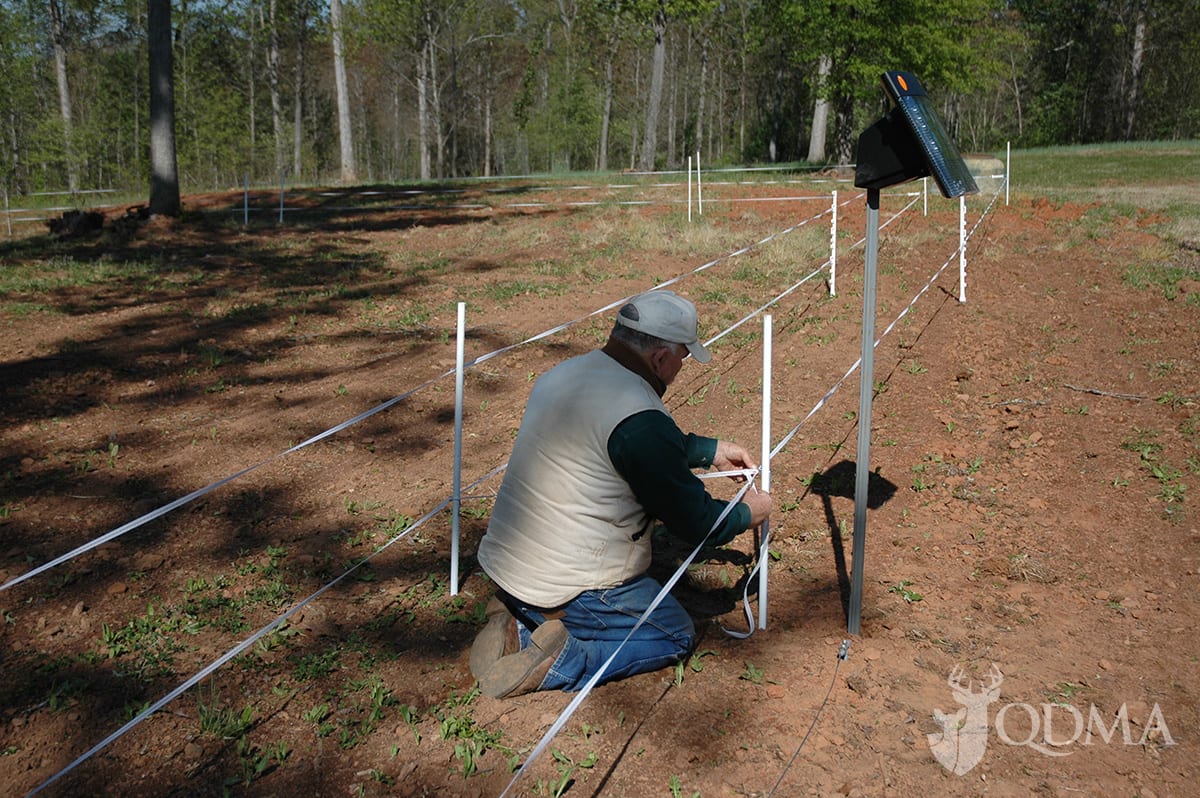
Summer food plots are highly susceptible to overbrowsing by deer. A fence may be your best solution to slow down the deer while your plots are getting started.
To avoid this fate, you will either need to plant enough that the deer can’t keep up with the growth of the plot (this may require planting plots over 1 acre in size, depending on deer density), or you will need to protect the plot with some type of repellent or temporary fencing until the plot is established enough to withstand the browsing pressure.
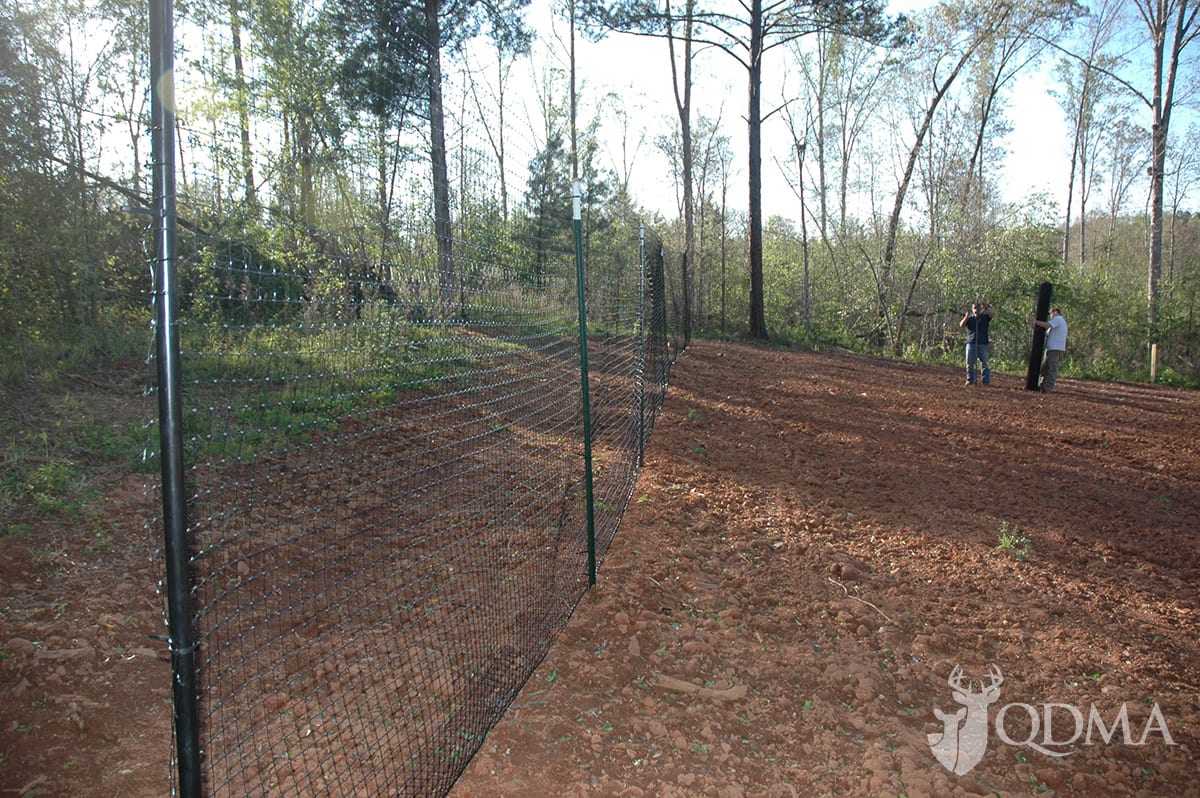
It’s a lot of work on the front end, but a fence around your food plot will give your summer plants the opportunity to grow to potential.
Another common threat to summer food plots are the warm-season weeds that come along with them. The key to to keeping your plots from being taken over by weeds is knowing what weeds you’ll likely be up against, and planning and treating accordingly. There are pre-emergent herbicides, which are sprayed on the plot prior to planting, and post-emergent herbicides, which are sprayed on the plot after your food plot seed germinates and is actively growing. Both have their pros and cons, and covering all the potential herbicide options is beyond the scope of this article. Just know that your herbicide options will vary based on what you choose to plant, what weeds are dominant in your area, as well as your budget (herbicides can be quite expensive!). Be sure to research and fully understand your options before buying herbicide and spraying your plot. As mentioned earlier, if you go with Roundup-Ready soybeans, then weeds can easily be controlled with Roundup or one of a variety of generic glyphosate herbicides.
Summary
The best food plot program for bowhunters is one that provides year-round nutrition. This is particularly true during times of high stress for white-tailed deer like the summer months, when bucks are growing antlers, does are lactating, and fawns are beginning to forage on their own. If you’re not currently planting any warm-season food plots, make this the year you start. Not only will the deer benefit, but it may just provide you with a shot at a great early-season buck.



